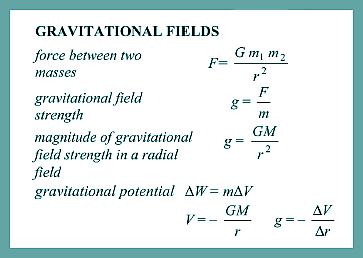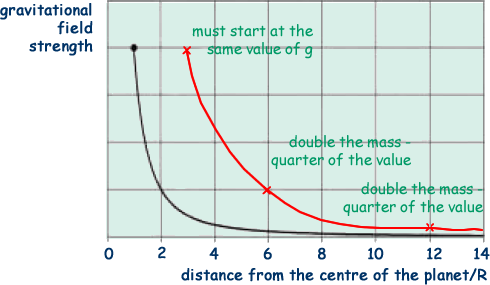Gravitational Fields Structured Questions
Q3.
(a)
(i) Explain what is meant by the gravitational field strength at a point in a gravitational field.
The gravitational field strength at a point is the force per unit mass acting on a small test mass placed at that point in the field. 
(ii) State the SI unit of gravitational field strength.
N kg−1 
(2 marks)
(b) Planet P has mass M and radius R. Planet Q has a radius 3R. The values of the gravitational field strengths at the surfaces of P and Q are the same.
(i) Determine the mass of Q in terms of M.

gP = gQ and G is a constant
so Mp/rp2 = Mq/rq2
Mq = Mprq2/rp2
Mp = M
rq = 3R
rp = R
Mq = M(3R)2/R2 
Mq = 9M
(ii) The graph shows how the gravitational field strength above the surface of planet P varies with distance from its centre.

An a line to the graph to show the variation of the gravitational field strength above the surface of Q over the range shown.
Graph line
- starts at 3R, with same initial value of g as existing curve

- is a curve of decreasing negative gradient

- shows the correct inverse square relationship,

(6 marks)
(Total 8 marks)


